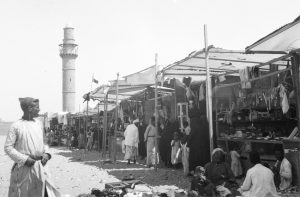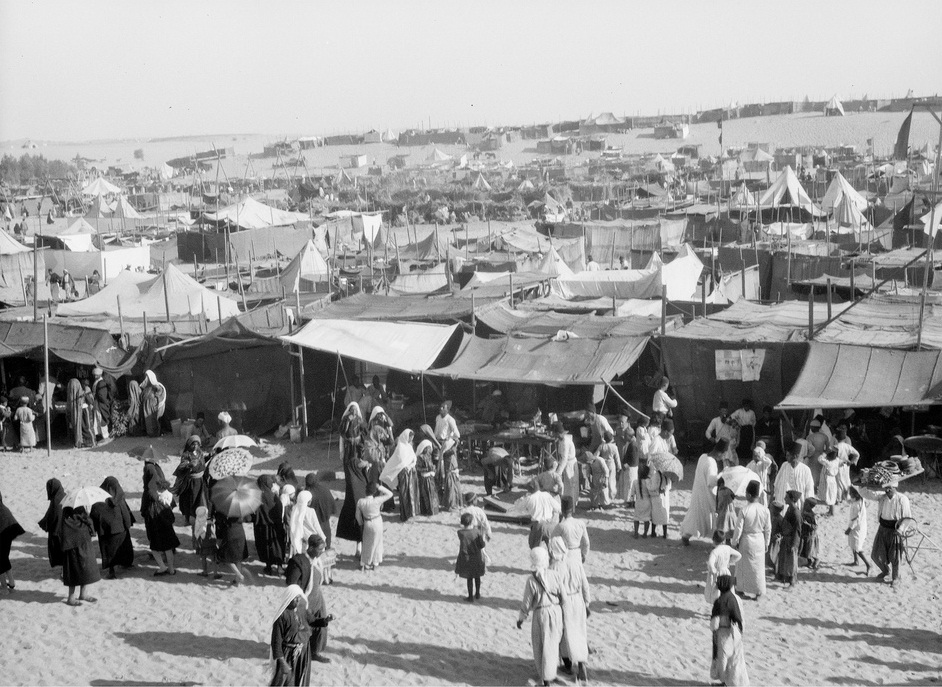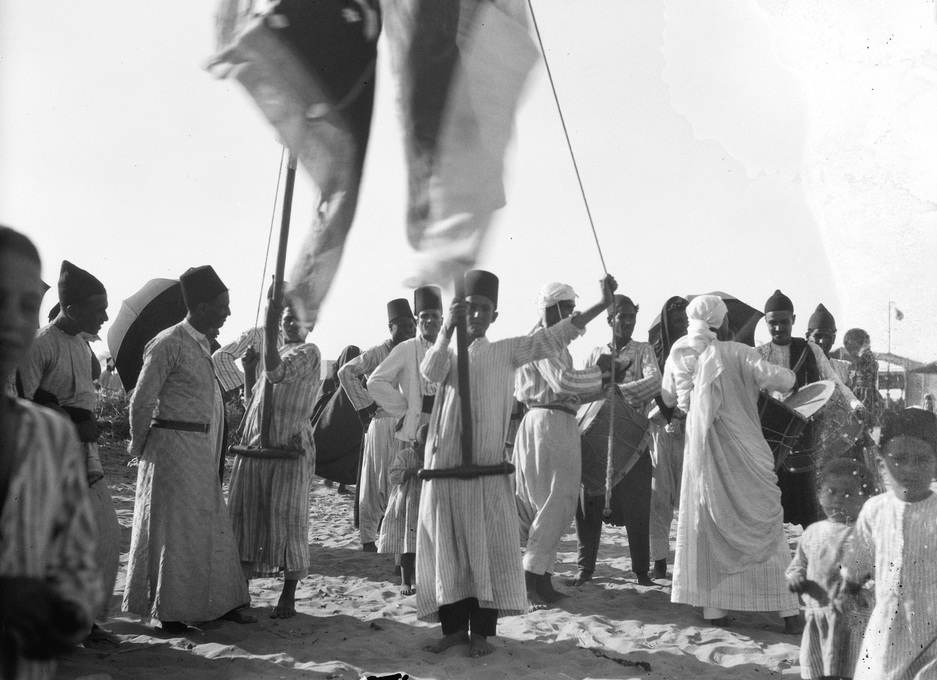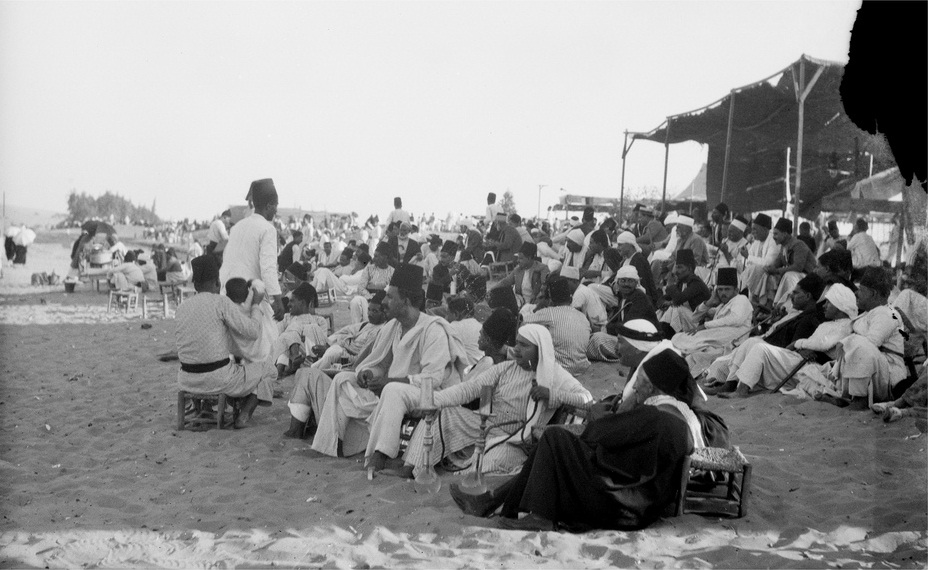Ajam Media Collective recently worked with THE STATE, a Dubai-based publishing practice, to make a ‘zine. We provided the words and art while they provided the design to make a wonderful collaborative document. Please also read our introduction.
Outside the West Bank town of Bethlehem lies the small village of al-Khader, home to the Monastery of Saint George, the patron saint of Palestine. Every May, hundreds of Christian and Muslim Palestinians converge on the area to take part in a festival celebrating the life and memory of the 4th century Christian martyr.
Although it was once a regional occasion drawing thousands of visitors from near and far, the destruction of Palestinian communities inside Israel in 1948 and the occupation of the West Bank in 1967 have reduced what was once a rambunctious festival into a more low-key celebration. Despite the changes, however, the intercommunal nature of the festival—and the spiritual syncretism of different faiths in Palestine it reveals—remains an important reminder of the cosmopolitan, crosscutting forms of being in the world that precede the rise of identity politics.
But this un-self-conscious cosmopolitanism is quickly fading, and has been fading for decades. While meeting with Palestinian Authority Minister of Tourism Rula Maayah recently, she told me that an image she likes to show tourists which explains the Palestinian approach to diversity is one from a coffee table book. It shows a Muslim woman in hijab praying beside a Christian woman at the Church of the Nativity.It is noteworthy, however, that the minister was not referring to a moment that she herself had witnessed; she was referring to a photograph in a book oriented toward tourists. And indeed, this was most likely a staged pictured meant to indicate to the reader a conscious celebration of diversity. In the minister’s retelling, the image’s attraction relied specifically on the visible recognition of “the other(s)” seated beside each other and the knowledge that this tolerance of the other’s presence was being communicated to a foreign audience, whom she assumed was likely to imagine Palestinians as religiously intolerant.
There is a reason the tourism minister showed me a picture in a book to highlight the concept of Palestinian diversity, and it is the same reason why I only offered one example—the monastery of al-Khader—of a shared place of worship: these shared worlds are increasingly few and far between. And this is not a story about Islamic fundamentalism, anti-modern radicalism, or ISIL; it is a tale of colonialism and identity politics more broadly.
As Salim Tamari brilliantly describes in Mountain Against the Sea, the syncretism we glimpse in Palestinian life today was more extensive and rich prior to the arrival of British colonists in the region in the late 19th century and early 20th centuries, a time when the religious festivals shared between Palestinian Christians, Muslims, and Jews were far more numerous. My intention here is not to romanticize Palestinian life during the Ottoman period in any way, but instead to stress that the implementation of the British bureaucratic management of Palestinian life and religion led to an increasingly limited, literal, and identitarian understanding of religious space and worship (a process some have called “Protestantization,” wherein every aspect of worship must be subject to supposedly “scientific” scrutiny).
Colonial authorities banned certain religious groups from holidays associated with one group or another in the interest of public order, and the memory of shared worlds of meaning that these intercommunal festivities embodied and produced slowly began to slip away (before they were pulverized in the 1948 Nakba, when the geography of those memories was all but eradicated as well). This process was by no means unique to Palestine in the colonial world; Reza Masoudi Nejad, for example, traces how the British banned Hindu attendance at the Muharram ritual in Mumbai in the late 19th century, and progressively limited Sunni participation as well, turning a shared ritual into a constant reminder of sectarian difference instead.
None of this is to suggest that the colonizers had a sinister plot to violently oppose religious identities to each other and sought to do so by ruining popular festivals. The emphasis on religion and religious identity ties more into issues of power, as administrators sought to understand, categorize, and control through whatever means possible. Their focus on religion and religious identity was an integral part of this. It was done through the creation of systems of governance—whereby citizenship was linked to religious identity and participation in the public sphere in a variety of legalistic and ever-more invasive mechanisms than ever before known—which set in motion an identitarian politics unique in regional history. This emphasis on religion and sect as markers of personal identity was codified in colonial laws and passed on to post-independence republics. Or in Palestine’s case, occupied zones under foreign rule.
In the early 20th century, when the Protestant British administrators arrived south of Jaffa and witnessed the festival of Nabi Reuben (“the Prophet Reuben”)—where 30,000 Palestinians of all faiths came together every August in a ritualistic embrace of the sea’s fertility; where Sufis danced in zikr at the seashore while women tore off their clothes and ran into the sea asking for blessings; where men told tales in a hundred dialects of Arabic while smoking opium; where performing women wandered through singing and harassing locals for cash—the British must have wondered to themselves: what does this have to do with the the son of Jacob and Leah mentioned in the book of Genesis? What is the religious significance of this supposedly religious mawsim?
This rationalization of religion and identity, and the need to categorize, understand, and regulate that it entailed, led to the greater policing of the festival. When Zionist militias—whose ideology was perhaps the most obvious embodiment of sectarian identity politics in existence at the time—marauded through Palestine in 1948, the festival was destroyed once and for all. The village was emptied, the homes, coffee shops, and shrines torn down, and 750,000 Palestinians sent into exile.
It is said that for some years after the Nakba, the women of the surrounding villages and towns—now all packed into refugee camps in the West Bank and Gaza— tried to recreate the festival by using local springs for the fertility songs and dances. But as the years passed, the memories faded, and by the 1970s a new generation emerged that had only known war and struggle and for whom it seemed obscene to dance around in dresses pouring water on each other while singing about sex. The shared worlds of meaning that the site of the festival allowed Palestinians of all faiths and backgrounds to produce and reproduce—having been subjected to rationalization under British colonialism and to mass deportation under Zionist nationalism—were dealt their death blow by the rise of identity politics.
But this process is not always violent. The contestations of identity and meaning today, surrounded by the ruins and remains of the shared cosmopolitanisms of the past, often take place in the world of meaning and our relationship to these sites of memory. While the shrine of Nabi Reuben near Jaffa has all but disappeared from Palestinian popular consciousness, for example, it has been revived by religious Jews as a site of Orthodox worship.
On the weekends one finds the occasional group of male seminary students reading Torah in the shrine, a far cry from the liminal worlds of fantasy and social deviance the site once hosted. The inscriptions have been painted over and the carnivalesque world of complexity that embraced an exuberant and cosmopolitan irrationality have been replaced by a literalistic, identitarian shell. The descendants of those who once danced in the sea at Jaffa, meanwhile, remain stuck behind an apartheid wall with ID cards that inscribe and re-inscribe their identities as the unwanted, expendable Other.
















3 comments